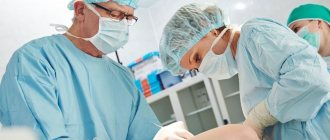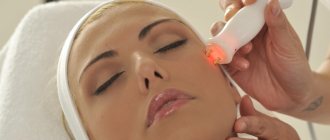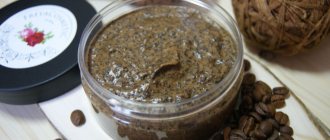Skin grafting, or dermatoplasty, is a surgical procedure performed to recreate damaged areas of the skin. Skin grafting after a burn is used if the basal layer of the dermis is affected, there are noticeable scars and other deep defects. The method of surgical treatment depends on the extent and location of the wounds. For burns of 3B and 4 degrees, surgery is performed immediately after injury. More often, dermoplasty is prescribed after tissue restoration to eliminate scars.
Who is suitable for skin grafting?
Skin transplantation is a complex surgical operation, which is prescribed for deep lesions of soft tissues. The success of therapy depends on:
- surgeon qualifications;
- area of the wound surface;
- patient's immunity.
The main indication for surgery is a deep burn when other treatment methods are ineffective. Without the epidermis and dermis, pathogenic microorganisms penetrate the body and heat exchange is disrupted. Burn injuries are fraught not only with cosmetic defects, but also with non-healing wounds and severe pain. Dermoplasty is necessary for extensive small-area burns, which are accompanied by total death of the skin down to the fatty tissue.
Skin transplantation after a burn in children and adults is advisable when all layers of the epidermis, dermis, fatty tissue, and muscles are damaged. Burns 3A, 3B, 4 degrees are the main indications for transplantation. In case of partial destruction of the basal layer, surgical treatment is prescribed after tissue healing to eliminate cosmetic defects - hypertrophic scars, burn scars.
Operation methods
There are several types of surgical intervention. Their choice depends on the degree of burn, the size of the affected area and location.
Transplantation of thin parts of the skin consists in the fact that a small area of healthy skin is removed along with the top and middle layers, then it is transferred to the damaged area. With this method, the skin quickly takes root and is not rejected by the body, but it requires more careful care.
Full-depth transplantation is most often suitable for the most visible places - the face and neck, since scars after skin grafting after a burn are less noticeable than with the first method. In addition, this method is indicated for the skin, which contains the largest number of blood vessels.
Composite grafting is necessary to restore skin, fatty tissue and cartilage. Most often, this operation helps restore the nose or ears.
Attention! All patients must undergo a full medical examination before surgery! The procedure itself is performed only under general anesthesia, as it is very painful. The body can lose a lot of blood during surgery, so cases of transfusion are not uncommon.
Types and techniques of plastic surgery on the skin
Skin grafting surgery after a burn is carried out in several stages. The duration of the procedure depends on:
- type of transplanted material;
- area of the burn wound;
- surgeon experience.
In surgery, there are 2 types of dermatoplasty:
- primary – suturing fresh burn wounds;
- secondary – correction of defects after skin regeneration.
Two dermatoplasty techniques are used - free and non-free, each of which has its own characteristics.
Non-free plastic
The operation involves plastic surgery using partially rejected local tissues and pieces from other parts of the body. In the second case, a flap on a feeding pedicle is used - pieces of skin with a subcutaneous fat layer and blood vessels.
There are three groups of transplants:
- flat;
- insular;
- tubular.
Plastic surgery with local grafts is performed in different ways:
- replanting of partially rejected flaps;
- plastic surgery according to I. Dieffenbach with the application of loosening notches to the graft;
- operation according to Yu. K. Shimanovsky with the closure of square wounds with movable rectangular flaps.
For burns in the facial area, plastic surgery using adjacent triangles is used. They are cut out together with the subcutaneous fat so that their angles are 30, 45 or 60°. The first type of triangle is used for facial plastic surgery, the last two are used to cover burns near the joints.
Transplantation can quickly restore normal functioning of the skin, remove inflammation, and also prevent the occurrence of an infectious disease or infection.
When transplanting a donor flap from another part of the body, the operation is carried out in 2 stages:
- preparing the graft for transplantation;
- suturing a prepared piece of skin to the burn wound.
Remote dermatoplasty is used to correct defects on the face. In a direct transplant, the surgeon removes a flap containing subcutaneous tissue from the shoulder area and then performs a nose job.
In difficult cases, they resort to combined non-free plastic surgery with simultaneous sewing in of local burned tissues and pieces from other parts of the body.
Combined techniques are used for primary transplantations immediately after a burn. If successful, there is no need for secondary surgery to correct cosmetic defects.
Free plastic
Free dermatoplasty is conventionally divided into two types.
Vascularized
Transplantation of complex grafts with the formation of new vessels inside the graft. It is carried out with a microscopic instrument under a microscope. To take a piece of skin, use a sharp scalpel, through which a piece is removed along with subcutaneous fatty tissue and the vascular network. During surgery, the vessels quickly connect with the capillaries around the wound.
Nonvascularized
Transplantation of large areas of skin using a dermatome (an instrument that removes a layer of skin of the required thickness). During the operation, two types of grafts are used - split or layered. The former include all layers of the dermis, and the latter exclusively the outer layers of the epidermis.
To take a split flap, a medical instrument in the form of a plane is used. It is intended for removing a donor flap for large area burns. The cut graft is lubricated with surgical glue, after which it is transferred to the drum. During treatment, the outer layer of the epidermis is removed. The prepared skin piece is placed on the operated area. The edges are sutured with nylon thread, and the graft itself is secured with a plaster cast or medical splint.
After surgery, dressings are done using antimicrobial ointments. They prevent inflammation of the operated tissues and transplant rejection.
Types of plastic surgery
Aesthetic surgery has the following types of operations:
- Free plastic . A skin flap completely separated from the donor area is used.
- Non-free plastic surgery . The defect is repaired with an adjacent skin graft or a piece of tissue on the feeding pedicle. The latter means that the transplanted flap is partially separated from the base. Its nutrition is carried out through an untouched area of skin through which blood supply occurs.
In turn, free plastic surgery can be:
- Vascularized , in which a skin flap with vessels is used. They connect to the general circulatory system.
- Nonvascularized when large areas of skin are transplanted. The transplanted material is taken split, that is, with the outer lobes of the epidermis, or layer-by-layer (for the entire thickness of the skin).
Depending on the time of transplantation, operations are:
- primary , when fresh wounds close,
- secondary , in which the scar tissue that formed several months after the burn is eliminated.
Where do they come from and what types of transplants are there?
To cover the surface of the wound, artificial or natural grafts from one's own or donor skin are used. When preparing for dermatoplasty, the following tissue properties are taken into account:
- color;
- elasticity;
- blood supply;
- degree of hair growth.
When preparing for dermatoplasty, surgeons are guided by the principle: the closer the donor tissue is to the operated area, the higher the quality of the graft. For example, for facial burns, skin flaps from the supraclavicular area are usually used. They take root well and retain a pink tint that does not differ in color from the surrounding tissues. In turn, flaps from the subclavian zone often acquire an unnatural yellowish tint.
There are several areas for donor skin that are suitable for closing burn wounds:
- stomach;
- upper back;
- supraclavicular region;
- lateral surfaces of the chest;
- inner thighs.
When performing facial plastic surgery after burns, flaps from the following areas are used:
- in front and behind the ear;
- supraclavicular.
To cover large wound surfaces, split flaps are used, which consist of superficial layers of skin. They are taken from the buttocks, inner thighs, and abdominal wall.
Depending on the depth of the burn and the area of damage, grafting material of varying thickness is used:
- Thick – contains all of its epidermis and dermis. Its thickness reaches 0.8-1.1 mm.
- Middle - includes the main layer of the dermis (reticular layer), which contains many elastic fibers. The thickness of the flap does not exceed 0.3-0.7 mm.
- Thin - consists of germ and epidermal layers, therefore contains few elastic fibers. After the burn heals, the sewn-in flap of skin shrinks. Its thickness is no more than 0.3 mm.
The following are used as donor material:
- amnion – the embryonic membrane of vertebrates;
- xenoskin – pig skin;
- allo-skin – preserved skin of deceased people.
Also used for burns is explant material - living tissue that is cultured outside the body in a nutrient medium. In 2017, the Spanish company BioDan Group, with the support of a research institute, developed a technology for printing a bionic substitute for living tissue. Artificial leather is printed on a 3D bioprinter charged with cartridges with:
- keratinocytes;
- blood serum;
- calcium chloride;
- fibroblasts.
Scientists have obtained a multilayer matrix on a hydrogel that supports cell viability. Artificial skin “ripens” in the laboratory and only then is transplanted into the human body. But so far this technology has only been tested on mice and is not included in surgical practice.
How is the operation performed?
Any such intervention begins with the selection of healthy areas. Depending on the location where it is taken, the area is processed and the required layer is cut out. If tissue is taken from a living donor, anesthesia is used. The areas usually used are the hips, buttocks, back, and chest. The area is cut out using a special tool.
At this point, a second group of doctors prepares the patient for surgery. The affected area is further treated and dried. In this case, there should be no inflammatory processes. Then the transplant itself begins.
A piece of healthy skin is placed over the damaged area. If the damaged area is small, it is fixed using special glue or staples. Serious injuries require surgical sutures. After this, doctors secure the area with a tight bandage. The entire manipulation takes no more than an hour, so it is considered a fairly simple procedure.
On the first day after transplantation, the patient's condition is closely monitored. Bandages are changed regularly and the surface is treated with disinfectant solutions. During and after the procedure, the victim may experience unpleasant symptoms such as bleeding or infection of the surface. In addition, skin sensitivity decreases and there may be a risk of rejection.
The likelihood of complications is most often encountered by people with poor immunity and certain chronic diseases. Age is also a risk factor. Interventions should be used with caution in young children and the elderly.
Postoperative care
The rehabilitation period after surgical treatment of burns takes from 3 to 6 months. It includes three stages:
- adaptation – from the end of dermatoplasty to the first 2 days;
- regeneration – from 3 days after surgery to 2-3 months;
- stabilization – after 3 months. after skin transplantation.
To prevent complications, patients must follow all doctor’s recommendations:
- Dressings must be done within 1-2 weeks. Compliance with sanitary and hygienic rules prevents infectious complications.
- The bandage is not removed until the skin has healed. This stage takes from 4 to 6 days. But in order to prevent detachment of the flaps, dressings are performed for another 7-9 days.
- To restore the skin, the operated areas are lubricated with ointments. Moisturizing antiseptic preparations stimulate healing.
Operated patients complain of severe pain, so they are prescribed local or systemic analgesics. To prevent infectious inflammation and tissue rejection, they take vitamin and mineral complexes with retinol, tocopherol and other bioactive additives.
The transplanted skin is vulnerable for the first 2-3 months. She is practically incapable of self-healing. Therefore, patients are prohibited from visiting saunas, swimming pools, and solariums. You should also avoid prolonged exposure to the sun. The operation is considered successful if there are no complications after 3 months.
Sign up for a free appointment:
What is the algorithm for admitting a patient to you?
We perform planned reconstructive surgery after injuries and burns. Patients come to us 6-12 months after injury. But sometimes there are those who come decades later. For example, a person lived with contracture for a long time, and then decided to get rid of it. Of course, it is better to do everything in the early stages (up to 2-3 years). Especially contractures. If a joint does not work for a long time, stiffness develops, which we have already discussed. We encourage all patients who have suffered post-burn injuries to undergo a consultation with us in order to outline a plan for reconstructive operations at an early stage.
The most common causes of scar deformities of soft tissues are burns. How difficult are operations to correct the consequences of burns and what are their features?
These operations can be multi-stage. We usually receive patients with combined injuries - for example, lesions of the face, neck, chest wall. The patient himself sets priorities, which areas to operate on and in what order. The interval between surgical operations is 4-8 months. As a rule, we first make corrections in open areas of the body, and then restore functionally active areas (joint contractures).
Does one surgeon operate or several?
Two people operate - a surgeon and his assistant. In one stage, it is sometimes possible to eliminate several problems: contractures of the elbow, shoulder, and wrist joints.
Tell us more about planning the operation. How do you determine what fabrics you will use for plastic surgery?
We mainly use nearby fabrics. If these are complex contractures, then we use patchwork plastic surgery (lingual, trapezoidal flaps). Local means fabrics in close proximity.
If there is a very large shortage of tissue, we use combined plastic surgery - we use both local tissue and tissue from other areas (we use donor flaps). Donor flaps are usually taken from the groin area or the anterior abdominal wall. If we are eliminating cicatricial eversion of the eyelids, then we use the inner surface of the shoulder as a donor area - the skin here is usually identical in texture and color. We apply cosmetic sutures to the donor wound.
Are there ways to increase the volume of skin grafted?
Yes, they do exist. Transplantation of skin flaps with perforation is used. For extensive burn wounds with an area of more than 30%, perforated split skin is used. They take a donor flap of skin from the thigh, perforate it, and this mesh is placed on the wound.
The plasticity ratio can be 1:3, 1:4 and even 1:6. That is, with this perforated mesh flap you can restore an area 3, 4 or even 6 times larger than with regular skin.
Many clinics offer laser resurfacing as a method of scar removal. Does this work in the case of post-burn and post-traumatic deformities?
We never polish off extensive burn scars. Especially if there are contractures. In such cases, it is necessary to surgically replenish the skin deficiency. Single small scars - you can try to remove them with laser resurfacing, but the effect is not guaranteed.
Do you take primary burns?
No, as I already mentioned, we deal with deferred operations. Seriously ill patients with burns are admitted to other departments. There they are treated according to quotas and appropriate methods. We are already working with existing problems, which are being dealt with as planned.
As a specialist in the treatment of burn injuries, give advice to our readers: what to do in case of a burn? What should be the first aid?
For some reason, such “folk” methods are very common among ordinary people - treating the burn with oil or sour cream. So this cannot be done. The burned area should be immediately cooled with cold water or ice. Then apply an aseptic bandage. In the simplest case, a sterile bandage can be moistened with chlorhexidine. The main thing is not to smear anything, as otherwise heat transfer will slow down and swelling will increase.
Let's also touch on keloid scars. Why do they arise?
There is a group of patients who, for unknown reasons, have a tendency to keloidosis, when a rough scar develops at the site of any wound or scratch. Scars are accompanied by pain, itching and redness. At the first stage, we treat them conservatively: electrophoresis with fermenkol, ultrasound with hydrocortisone, magnetic therapy and diprospan injections, and we prescribe wearing compression garments. If this does not produce results, then we move on to surgical methods, and then apply physical therapy. A tendency to keloidosis can appear on any scars: burns, postoperative, post-traumatic.
Frequent “suppliers” of keloid scars are third-degree burns. These are quite deep burns, but with the preservation of the growth zone, such burns heal on their own. The patient is happy - he did without surgery! But then very often keloid scars form at the site of such burns, which require surgical correction.
There is such a defect as post-burn syndactyly (fusion of fingers and toes). Can I contact you with this problem?
Yes, we treat such patients. We use both local plastic surgery and combined plastic surgery using skin from donor areas. But we only work with adult patients over 18 years of age.
Natalia Alekseevna, thank you for the conversation. We tried to consider all options for scar deformities that may require treatment and present our readers with modern correction methods. However, we still hope that injuries and burns will not affect them. Take care of yourself!
Possible complications
The procedure of skin grafting after burns is dangerous due to both early and delayed complications. The first include:
- bleeding from the operated area;
- rejection of donor skin;
- slow wound healing;
- infectious inflammation.
If the skin flap is detached, repeat dermatoplasty is performed.
Although necessary, the transplant procedure has some disadvantages. The main one is the risk of transplant rejection. If donor skin or synthetic material is used as a material, there are always concerns about tissue incompatibility.
If ulcers form at the site of damage, antibiotic therapy is prescribed. But even after successful engraftment, complications sometimes arise:
- decreased sensitivity of the skin;
- lack of hair growth in the transplanted areas;
- scarring, shrinkage of the graft;
- stiffness of movement due to tissue tension.
Lumps, insensitivity, and discoloration of the skin at the burn site are reasons to consult a doctor. The specialist will assess the severity of the situation and determine the least traumatic ways to eliminate complications.
Preparatory stage of skin grafting for burns
Like any surgical procedure, skin grafting requires certain preparation. The patient is prescribed a number of activities, including the collection of tests, diagnostics, including differential, visual examination and preparation for anesthesia.
In addition to diagnostics, the patient undergoes mechanical cleansing of the wound from necrotic and damaged tissue. It is necessary that all epithelium that cannot be restored be removed, otherwise the “second” skin will not take root.
A few days before transplantation, the body is prepared to improve its functions:
- treating the wound with local antiseptics;
- if an infection is present, apply bandages with an antiseptic, penicillin-based ointments, and boric acid. They are canceled 3 days before surgery;
- blood or plasma transfusion;
- taking vitamins to maintain general condition.
Immediately before the operation you should not eat or drink, the intestines must be empty.
Skin graft surgery
When not to have surgery
Reconstructive skin plastic surgery is contraindicated if there is a high risk of complications. Carrying out skin grafting procedures on burn wounds is prohibited when:
- secondary immunodeficiencies;
- purulent complications;
- pathologies of the heart and blood vessels;
- mental disorders;
- skin diseases.
Cosmetic plastic surgery is not prescribed during pregnancy, exacerbation of chronic diseases, or if damaged tissues are infected.
The operation is postponed in case of herpes zoster, trichophytosis, abscesses, acne, etc. Patients with vitamin deficiency undergo pre-vitamin therapy. It stimulates the immune system, thereby reducing the risk of infectious inflammation of transplanted tissues and their rejection.
Types of plastic surgery for scars on the face and body
Modern plastic surgery for scars and burns of the face and body today has various techniques for “removing” damage. They can be not only surgical, but also “non-surgical”.
Non-surgical methods of plastic surgery for burns and scars
Non-surgical methods today include laser, ultrasound and injection technologies. They are something between surgical interventions and cosmetic procedures. They are similar to the former in efficiency, and to the latter in their minimal invasiveness. The latter term means that this kind of manipulation is minimally traumatic, it does not affect nearby healthy tissue, does not require sutures and does not even require a hospital stay.
Laser and ultrasound methods involve smoothing out the scar either by removing the upper layers of the epidermis in the damaged area to bring it as close as possible in texture and color to the appearance of healthy skin, or by evaporating it, when under the influence of the energy of a laser beam the liquid contained in the damaged tissue is gradually heated and then removed . The indication in this case is scars that are not rough and relatively small in size.
Injection methods of scar plastic surgery are indicated in the case of retracted scars. Correction here occurs through the introduction of special preparations into the subcutaneous space, which, filling it, return the skin to an even and smooth surface. However, this procedure also involves laser resurfacing, which evens out the tissue in color.
In addition to non-surgical methods, plastic surgery of facial burns and scars also “operates” with endoscopic and classical surgical techniques.
Average cost of skin transplant in Moscow
Dermatoplasty is an expensive operation, the cost of which depends on:
- wound area;
- transplantation techniques;
- surgeon qualifications;
- type of transplant.
Autoplasty is cheaper because the person’s own tissue is used for transplantation. Prices for surgery in Moscow clinics vary from 100 thousand to 260 thousand rubles.
Skin grafting is one of the effective methods for treating serious burns and post-burn scars. During the operation, the area of the skin that has undergone changes is recreated. The success of dermatoplasty depends on following medical recommendations. To prevent complications, patients must take prescribed medications and undergo physical therapy.
Price
The cost of skin grafting is determined by various factors: the area of the damaged surface and the complexity of the specific operation, the type of materials and anesthesia used for transplantation, other pharmacological agents, the qualifications and professionalism of the surgeon, the location and reputation of the clinic. Depending on these factors, the price of the operation can range from 10,000 to 200,000 rubles.
Skin plastic surgery after a burn is not a complex or lengthy operation. But in some situations, graft engraftment after transplantation proceeds poorly, even if the donor material is one’s own skin. Detailed preparation for plastic surgery, correct calculation of the timing of its implementation, and appropriate care during the rehabilitation period are mandatory conditions for successful skin plastic surgery and help minimize the likelihood of developing postoperative complications.
Features of care and rehabilitation after transplantation
The recovery period can be divided into 3 periods. The first takes place within 2-3 days after surgery, when the skin adapts to each other. The second stage is regeneration, which lasts 2-2.5 months. During this period, it is necessary to protect the area with transplanted skin from various types of damage. The bandage is removed only with the doctor's permission.
Wound care is an important part of postoperative care. The procedure is carried out only in the clinic using sterile materials. For home use as painkillers, the doctor prescribes oral medications, and special ointments are used to maintain water balance in the wound. The main thing is not to let the skin at the transplant site dry out, otherwise you will feel severe itching. The recommendations given by the doctor before discharge are as follows:
- timely change of dressing;
- compliance with bed rest;
- the wound should not be wet;
- compliance with the drinking regime;
- giving up alcohol;
- taking vitamins;
- proper nutrition.
The third stage of recovery is rehabilitation. It lasts from 3 months until complete recovery. By following all the doctor’s recommendations, the recovery period begins quickly and without obvious complications. Then the person will be able to return to their normal lifestyle.











